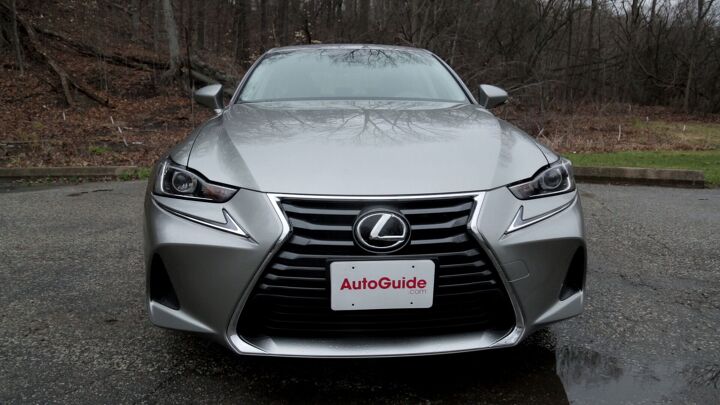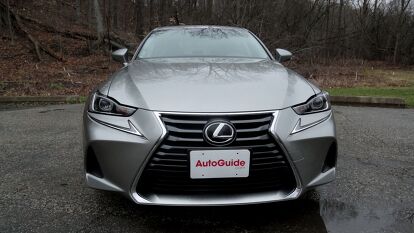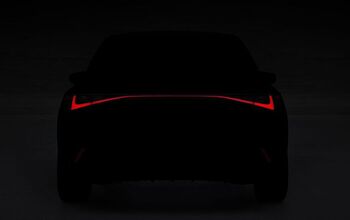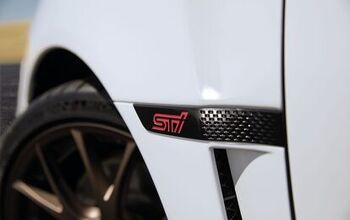2017 Lexus IS 300 AWD Review

Lexus is playing catch up in the sport sedan segment and one way it is trying to be more competitive is by introducing new trim levels in its popular IS series.
For many, the base IS 200t would be a great choice, but it’s only available with rear-wheel drive. On the other hand, the range-topping IS 350 drives all four wheels but can be expensive and fuel thirsty. To try to alleviate this issue, Lexus has recently introduced a model right in the middle of the lineup that can only be had with all-wheel drive. Called the IS 300 AWD, this in-betweener might be the Lexus shoppers are looking for.
While the four-cylinder turbocharged Lexus IS 200t starts at $38,820 in the U.S. with destination, the IS 300 AWD comes in at $41,195 ($42,950 CAN) commanding a $2,375 premium ($2,800 CAN) for two extra drive wheels and cylinders. It sounds like a good deal at first, but dive a bit deeper and the bargain seems to evaporate.
FAST FACTS
| Engine: | 3.5-liter V6 |
| Output: | 255 hp, 236 lb-ft of torque |
| Transmission: | 6-speed automatic |
| Fuel Economy (MPG): | 19 city, 26 hwy, 21 combined |
| Fuel Economy (L/100 km): | 12.6 city, 9.2 hwy, 11.0 combined |
| US Price: | Starts at $41,195 |
| CAN Price: | Starts at $42,950 |
In Comparison to its Stablemates
With a 3.5-liter V6 making 255 hp and 236 lb-ft of torque, the IS 300 AWD has 14 ponies over its smaller displacement, turbocharged brother, but is also down 22 lb-ft of torque. The lack of twist is noticeable off the line, and the IS 300 AWD feels slow and pokey to get going. The six-cylinder engine, however, does provide smooth and linear acceleration, which is frequently a criticism of turbocharged vehicles that feel peaky and can drop off their power surges at higher RPMs.
And the car seems much less powerful and torquey than the range-topping IS 350, which has 50 more horsepower and 40 more lb-ft of torque. It uses the same 3.5-liter V6 as the IS 300, but clearly tuned much differently. The IS 350 AWD starts at $44,530 in the U.S. ($53,350 CAN) which represents a $3,335 increase over the IS 300 AWD (But for Canadians its a much more significant difference at $10,400)
Fortunately, the detuned 3.5-liter V6 also sounds plenty nice at high RPMs, but the car doesn’t like to stay too high up in the rev range, frequently upshifting to ensure the cabin and car are as serene as possible. The six-speed automatic is used in the IS lineup for all-wheel-drive vehicles, while an eight-speed automatic is used in the rear-wheel-drive models. If this car had the eight-speed, it could potentially solve the car’s lethargic nature and definitely improve the car’s fuel economy.
There’s also no benefit at the pumps for getting the IS 300 AWD over the IS 350 AWD, as the two cars earn 21 mpg in combined driving. If buyers thought they would also get some fuel savings by opting for the less powerful V6, they should think otherwise, and consider the much more fuel efficient IS 200t, which gets 26 mpg, but doesn’t offer all-wheel drive.
On the Road
As a sport sedan, the car should offer a blend of sporty handling and a premium feel, and the Lexus mostly delivers on the promise. The neutered engine doesn’t impact the solid driving dynamics of this car. The steering is good, which is to say it’s well-weighted and responsive. Even the steering wheel itself is nice and chunky, with lots to hold onto and a really progressive steering feel with none of the weirdness you get from variable ratio racks.
The chassis is also pretty good, meaning that the car reacts to direction changes well, but without the harshness that comes from cars trying to be too sporty. It’s best described as smooth and obedient. It’s not super fast or sharp, but it’s very accommodating. The suspension in particular is really balanced between soft and stiff. It really suits the nature of the car and the overall Lexus brand, which is less sport focused than some of its rivals.
In the Car
As the balanced driving behavior won’t reward or disappoint you, it’s worth talking about the polarizing interior of the car. With plenty of strange angles to be found throughout the cabin, it’s certainly a unique, expressive design just like the exterior of the car. It’s definitely not the most user-friendly, with bizarrely placed vent openings and an infotainment screen that’s far and deep into the dashboard.
That infotainment system also has to be one of the worst designs available on the market, thanks to an imprecise and hyperactive mouse-like controller, it’s a pain to select items on the screen. It makes it extremely frustrating to control the navigation or make calls while driving and requires too much attention when the driver’s attention should be on the road.
Besides the infotainment system and questionable design, the Lexus has an interior with enough head and legroom for passengers in the front and rear of the vehicle. The feature set is kind of bare for base models, but our model had a few upgrades like a backup camera (it’s egregious that a backup camera isn’t standard), upgraded multimedia system with navigation, ventilated seats, heated steering wheel, parking sensors and blind spot monitoring. In Canada there’s significant feature differences and items like heated seats and a backup camera are standard. The car gets standard safety and driver assist features including pre-collision warning system, a lane-departure alert system with steering assist, automatic high beams, and adaptive cruise control.
The Verdict: 2017 Lexus IS 300 AWD Review
The total price of our tester came in at under $50,000, and, quite frankly, it’s hard to recommend this over the two other models in the Lexus IS lineup. The 200t is cheaper, gets better fuel mileage and feels great to drive thanks to its lighter, turbocharged, rear-wheel-drive setup. On the other hand, if you need AWD, the IS 350 AWD is $3,335 more expensive than the IS 300 AWD and comes with much more power and features the same fuel economy as the less powerful engine.
Simply put, the IS 300 AWD isn’t the Goldilocks model it appears to be, and you’re better off getting one of the other Lexus sport sedans in the lineup.
LOVE IT
- Unique design
- Smooth powertrain
- Balanced driving feel
LEAVE IT
- Detuned engine is a dud
- Poor fuel economy
- Infotainment system

Sami has an unquenchable thirst for car knowledge and has been at AutoGuide for the past six years. He has a degree in journalism and media studies from the University of Guelph-Humber in Toronto and has won multiple journalism awards from the Automotive Journalist Association of Canada. Sami is also on the jury for the World Car Awards.
More by Sami Haj-Assaad


















































Comments
Join the conversation
Plz lexus, manual transmission! I know it won't sell that well, but it gives a few of us a nice reliable alternative to BMW.
Lexus 2.0T is truly a dud and about as slow as you can get in the NX, IS, and GS.